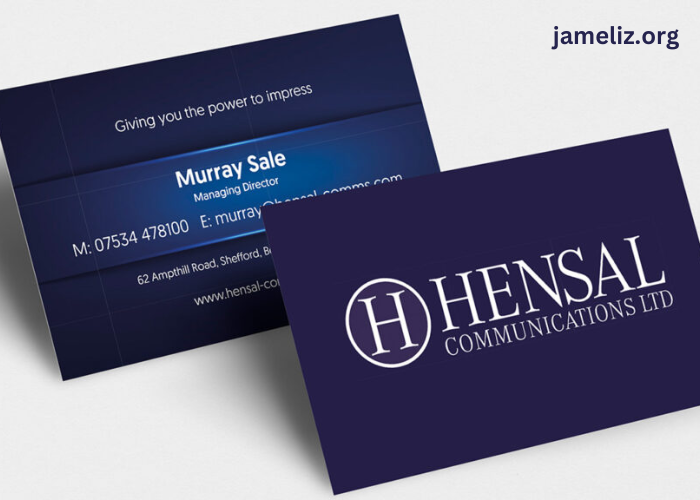You might be wondering if business cards are still important in the current digital era. Without a doubt, the answer is yes. These little pieces of paper are still very important for networking as well as leaving a lasting impression. Knowing the ins and outs of business cards can offer you a big advantage, regardless of your experience level or stage of employment. Let’s explore the key information concerning these potent networking technologies that you should be aware of.
-
The Power of First Impressions
For a new contact, your business card is sometimes the first physical reminder of your professional identity. It can make or destroy that important first impression along with serving as a tangible remembrance of your meeting. A professionally made business card conveys your attention to detail, professionalism, and brand identification in a big way. It’s a tiny billboard promoting you and your company, not just a piece of paper with your contact details on it.
You make a statement as soon as you give someone your business card. A superior card with an elegant, well-designed layout conveys to the receiver your seriousness about your work as well as appreciation for the relationship you are building. However, a cheaply made, flimsy card could come across as careless or unprepared, which would be detrimental to your professional reputation. Recall that your business card will frequently serve as a lasting impression of you even after your initial meeting has concluded.
-
Essential Elements of an Effective Business Card
However, to ensure that your business card serves its purpose to the letter, there are elements you must include in the design of your card. To begin with, the first feature of any website or homepage is that people should see their name. Despite this being obvious, you will be astonished to find that some business cards place the contact information behind the name of the bearer. One thing that any person should see when looking at it is the card-bearer’s name.
Add your profession or work title after that. This provides context for your actions and identity. Select the title that best fits your networking objectives if you wear several hats or have several positions. A conspicuous display of your company name as well as logo (if applicable) is also recommended. This enhances the professional appearance of your card and aids in brand identification. You may decide to utilize your personal brand instead if you are a freelancer or a lone proprietor.
-
Designing for Impact
Your business card’s design is where you can truly make an impression. Even though you want to maintain a professional appearance, don’t be scared to add some personality or originality that fits your brand. Selecting the right colors is crucial; if you have a brand, they should match. If not, go with colors that are appropriate for your industry. For instance, blue is frequently associated with professionalism and trust, but green may be more appropriate for financial or environmental services.
Typography is yet another important component. Select legible typefaces that are readable at small sizes as well. Limit your font selection to no more than two: one for your name and maybe another for the remaining text. The information should flow organically via the arrangement. Make good use of white space to keep the card from appearing cluttered. Recall that an information-rich design frequently lacks the impact of a clean, uncluttered one.
-
Proper Usage and Etiquette
Having well-designed business cards is not as crucial as knowing when and how to utilize them. Always keep your cards close at hand. Searching through your wallet or luggage for a card can detract from the polished appearance you want to convey. Your credit cards can be kept neat and accessible with a little card holder. Present your card with both hands, text facing the other person, when exchanging cards. This demonstrates deference and enables them to read it right away.
There are certain cultural customs regarding exchanging business cards, especially in Asia. For instance, exchanging business cards, or “meishi,” is a custom with tight guidelines in Japan. Playing or writing on a newly acquired card is frowned upon. Cards are handed and accepted with both hands. It’s important to learn about the particular traditions surrounding the exchanging of business cards in other cultures if you conduct business there.
-
Digital Integration and Modern Trends
As relevant for interpersonal networks as they are, the traditional and material business cards are also viewed in connection with the digital networking aids. Many business cards today are designed to have a quick response code where when scanned would lead you to the individuals’ website or portfolio or directly take the individual’s details to the contact list of a phone. This replaces the ofApp, the generalized card, and digital simplicity.
Conclusion
Even with the rise of digital communication, business cards remain an important tool for professional networking. They provide a concrete, unique touch that might make you stick out in the crowd of virtual acquaintances. Additionally, considering the use of canopy tents at outdoor networking events can create a memorable and professional setting for distributing business cards and making lasting connections.

